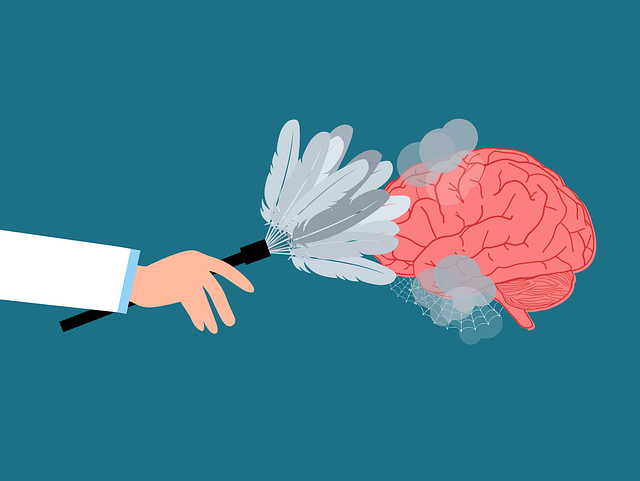Mental wellness journaling is a powerful tool for self-reflection and healing, especially beneficial for individuals with Lone Tree Adjustment Disorder (LTAD). Regular journaling enhances communication strategies by articulating feelings, aids in understanding emotional patterns and triggers, and facilitates the development of consistent self-care routines. Combined with LTAD Therapy, journaling offers a transformative path to self-discovery, emotion processing, trigger identification, and coping strategy development, ultimately improving mental wellness. Establishing a dedicated journaling routine provides a safe space to explore thoughts and emotions, promoting consistency in writing sessions for better mental health management.
“Unwind your mind and embark on a journey of self-discovery with mental wellness journaling. This powerful practice, often supported by Lone Tree Adjustment Disorder Therapy, offers a sanctuary for processing emotions and fostering healing. In this article, we’ll explore the transformative benefits of journaling, from enhancing self-awareness to providing a safe space for expression. We’ll delve into practical tips for establishing a consistent routine, ensuring your journaling journey becomes an effective tool for managing mental wellness.”
- Understanding Mental Wellness Journaling: Unlocking Self-Reflection and Healing
- The Role of Lone Tree Adjustment Disorder Therapy in Journaling Practices
- Creating an Effective Journaling Routine: Tips and Techniques for Consistent Progress
Understanding Mental Wellness Journaling: Unlocking Self-Reflection and Healing

Mental wellness journaling is a powerful tool that encourages self-reflection and promotes healing. It involves setting aside dedicated time to explore your thoughts, emotions, and experiences on paper. This practice can be particularly beneficial for individuals dealing with conditions like Lone Tree Adjustment Disorder (LTAD), as it fosters a deeper understanding of one’s mental state and provides a safe space for expression.
Through journaling, you engage in self-awareness exercises that enhance communication strategies. By articulating your feelings, you begin to unravel the complexities of your emotions and gain insights into patterns or triggers that might contribute to LTAD symptoms. Moreover, this process facilitates the development of a consistent self-care routine for better mental health. Each entry can serve as a reminder to prioritize well-being and make necessary adjustments, ultimately supporting long-term recovery and resilience.
The Role of Lone Tree Adjustment Disorder Therapy in Journaling Practices

Journaling has emerged as a powerful tool for self-reflection and emotional healing, especially when coupled with Lone Tree Adjustment Disorder Therapy (LTADT). This therapeutic approach encourages individuals to explore their thoughts and feelings in a safe, non-judgmental space, fostering inner strength development. By integrating journaling into LTADT sessions, therapists facilitate the process of processing emotions, identifying triggers, and cultivating coping strategies for anxiety relief.
The practice of writing down experiences and observations allows individuals to gain insights into their behaviors and thought patterns. Moreover, it promotes empathy building strategies by encouraging self-compassion and understanding. Through regular journaling practices, clients can track their progress, identify recurring themes, and develop effective mechanisms to navigate challenging situations, ultimately enhancing their overall mental wellness.
Creating an Effective Journaling Routine: Tips and Techniques for Consistent Progress

Establishing a dedicated journaling routine can significantly enhance mental wellness, offering a safe space to explore thoughts and emotions. Consistency is key; aim for a regular time each day or week to write. Begin with a clear intention – whether it’s processing challenges, cultivating gratitude, or simply observing your feelings. Start with prompts like “What made me happy today?” or “What am I grateful for?” as entry points.
For those dealing with Lone Tree Adjustment Disorder Therapy, journaling can provide valuable insight into managing symptoms. Incorporate techniques such as tracking moods, identifying triggers, and practicing self-compassion. Emotional Intelligence and Burnout Prevention Strategies for Healthcare Providers can also benefit from this practice, fostering mindfulness and a deeper understanding of one’s internal world.
Mental wellness journaling is a powerful tool that can significantly enhance our understanding of ourselves and contribute to improved mental health. By combining practices from Lone Tree Adjustment Disorder Therapy with consistent journaling routines, individuals can unlock deeper self-reflection and foster healing. Incorporating reflective writing, mindfulness exercises, and tracking progress over time allows for the development of resilience and emotional intelligence. Through dedicated practice, anyone can harness the benefits of journaling to navigate life’s challenges and cultivate a healthier mindset.














